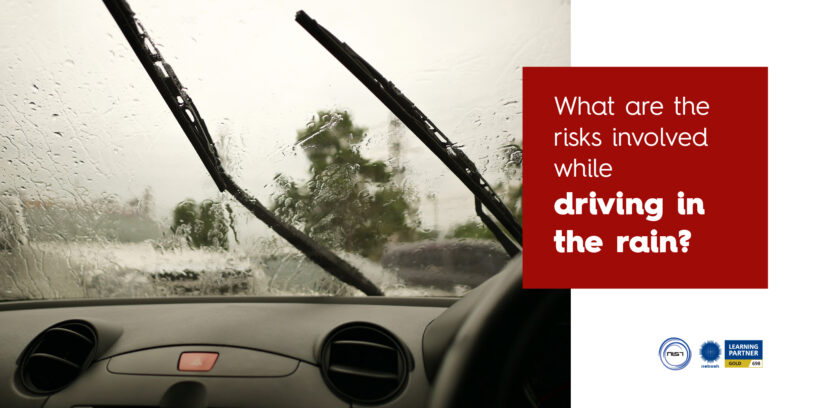Driving safely in the rain is essential for the safety of all road users, including passengers, drivers, and pedestrians. The chance of road accidents rises when it rains because it often makes the roadways slippery and reduces visibility. Knowing the facts about risks associated with driving in the rain can assist increase awareness and make roads safer. There have been several recent days of intense rain, and many of these cases show how the risk of accidents is greatly increased by the rain, emphasizing the need for drivers to exercise extra caution in these circumstances. The severity of this issue is further highlighted by the fact that wet-weather accidents cause thousands of injuries and fatalities each year.
This blog will go over several risk factors involved while driving in the rainy season. For a number of reasons, driving in the rain can be risky and the following are some of the elevated risks:
Reduced visibility:
Rain, especially heavy rain, can make it difficult to see across a road. As a result, it is more difficult for drivers to notice other cars, pedestrians, and possible dangers. Furthermore, glare from headlights and lamps may be caused by wet roads, further reducing visibility.
Reduced traction:
When rainwater mixes with dirt, oil, and other things on the road, the result is a surface that is more slippery. This lessens the tyres’ traction on the ground and increases the risk of hydroplaning or skidding, in which the car loses control and slides erratically.
Longer braking distances:
On wet roads, it takes more time to stop completely. This implies that a driver might not be able to stop in time to prevent an accident if they need to brake rapidly.
Increased chance of aquaplaning:
When a layer of water accumulates between the tyres and the road, it causes hydroplaning, which can result in traction loss and even skidding out of control. In times of heavy rain and higher speeds, aquaplaning is more likely to happen.
Malfunctioning vehicle parts:
Rain & moisture can cause electrical parts to stop working properly in a car, which can cause crucial systems like the brakes, headlights or windscreen wipers to perform poorly or stop working altogether.
Reduced predictability:
Due to decreased visibility, longer braking distances, & the stress of driving in the rain, drivers may exhibit unpredictable behaviour in rainy circumstances. This may result in unpredictable driving and a higher chance of accidents.
Flooding:
Flooding brought on by heavy rain can obstruct traffic and make it challenging to determine the amount of standing water. Driving through flooded areas can be hazardous because stalled or swept away vehicles are a common occurrence. Additionally, driving through water can seriously harm a car’s electrical and engine components.
Wind:
Along with rainstorms, strong winds are sometimes present, which can make it difficult for a car to maintain its balance, especially while travelling fast or on elevated roads and bridges. Crosswinds can make it difficult for drivers to keep their cars under control, which raises the possibility of accidents.
Even the most experienced drivers may find driving in the rain difficult and sometimes dangerous. Wet roads can limit grip, reduce visibility, and raise the risk of hydroplaning, so drive cautiously & adapt your driving style to the conditions.
Stay tuned for our upcoming blog on Tips to drive safely in the rain where you will get a myriad of insights about safe driving techniques..
Defensive Training @ NIST Global
NIST Global offers Defensive Driving Training to organizations, industries, and others whose personnel may need to enhance their driving skills in order to avoid road accident or harm. Defensive driving training helps delegates comprehend traffic regulations, safe driving techniques, and basic car mechanics. The basic goals of the online defensive driving course are to reduce risk by predicting potentially dangerous circumstances, adverse weather, and driving blunders.
For further details about Defensive Driving Training, kindly contact our client servicing team @ +91 8754465588 / info@nistglobal.com














Leave a Reply